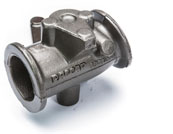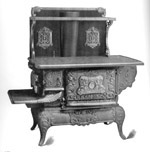1902

When an auction for a foundry owned by National Iron Works Ltd failed to draw a single bid, the town council advertised the foundry in the Toronto papers.
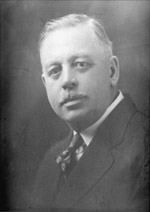
Five businessmen bought the lands, buildings and machinery to establish a stove foundry on the site.
1907
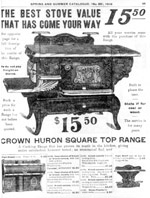
The first stove in the 1908 Eaton’s catalogue was the Crown Huron range priced from $24.95. The stoves were shipped directly from the foundry to customers by rail, marking the start of a 60-year relationship with Eaton’s.
1930
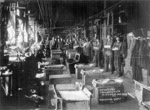
The foundry had the T. Eaton Company to thank for their survival throughout the 30’s. The foundry men worked four days a week and the foundry’s ability to manage their labour and produce non-stove parts was essential to their success.
1942
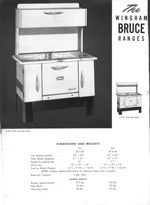
As the war dragged on, stove manufactures were only allowed to produce models approved by the government due to the steel and iron shortages. 12 stoves were removed from the Company catalogue due to the restrictions on iron and steel. However, The Western Foundry continued to make a profit.
1948
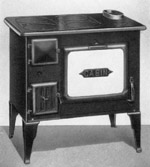
Between 1946 and 1948, the foundry sold over one million dollars worth of stoves, ranges and furnaces, including many to South Africa and China. Stoves were sold faster than they could be produced. Some of the land that had been sold in the 1920’s was repurchased.
1961
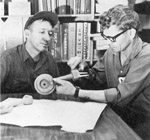
The foundry picked up some casting business for gas burners for the Garland Stove Company. The burners were hollow requiring a core of sand to be inserted into the mould once the mould was made. The foundry began developing its expertise in the moulding and pouring of thin-walled castings.
1964
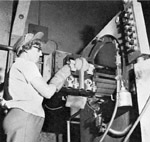
The summer was spent manufacturing radiators for the Toronto Separate School Board but they sprang leaks when turned on in October. The foundry lost $64,000 replacing the radiators and lost their credibility in the cast iron heating business. It almost broke the Company but taught an important lesson.
They were willing to manufacture anything to keep the foundry and steel room busy. The work not only paid the wages, it also funded much needed renovations and equipment updates.
1966
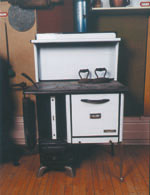
Stove production was discontinued in 1966. For years after, the foundry still sold stove replacement parts from the stock they had on hand.
1974
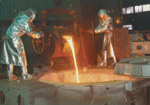
The existing buildings were replaced and the plant size increased by 100% Western Foundry continued to attain automotive parts contracts, but it was not their field of expertise yet.
1979
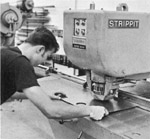
Western Foundry realized that trying to produce a bit of everything made it difficult to create a system that produced high quality. Although the steel room had kept the foundry afloat in the 60’s, by 1979, highly cored, thin-walled complicated parts would become their specialty.
1980
Pontiac Firebird and Chevrolet Camaro manifold helped sustain the foundry through the recession Show
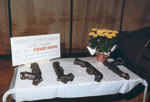
Despite cutting wages and laying off workers for periods of time, the foundry continued updating plant equipment. A switch from producing grey iron to stronger, more heat resistant ductile iron handled the higher exhaust temperatures of the new fuel-efficient engines.
1983
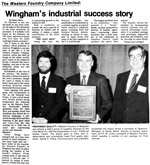
The Company recognized the value of Q1 standards and began applying them to their manufacturing process. Their focus on quality paid off. When Ford went looking for new foundry sources, Western Foundry was at the top of their list.
1987

Expansion continued in the mid 80’s and by 1985, the original Wingham foundry had grown three times its original size. By 1987, the foundry was primarily dedicated to producing thin-walled manifold castings.
1988
The foundry won a bid with General Motors to replace the current stainless steel tubular manifold on their Quad 4 engine. The manifold reduced exhaust noise, provided increased torque and horsepower and saved GM a significant amount of money per engine. The Western Foundry had entered the arena of automotive design.
1991
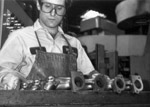
Western Machining’s first contract to machine the new 4.6 litre V8 engine manifold was award by Ford. With a machining plant in place, Western Foundry took advantage of the trend for Tier 1 companies to supply automotive parts as OEMs began outsourcing capital and labour intensive machining processes.
1993
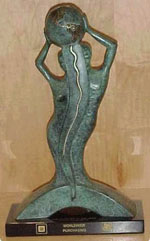
General Motors recognized the Western Foundry by awarding the Company the 1993 Worldwide Supplier of the Year Award. To be chosen, the foundry exceeded specific performance standards in quality, service and price. This was the first of seven consecutive Worldwide Supplier of the Year Awards.
1994

To finance continued expansion and growth, a decision was made that the Western Foundry become a public company. The name was changed to Wescast Industries Inc. and listed on NASDAQ on October 26, 1994, for $11.00 U.S. per share, trading under the symbol WCSTF.
1998

Wescast (USA) Inc., located in the Greater Detroit Area, was established in 1998 as part of Wescast’s commitment to provide superior customer service with local sales and design support.
1999

Wescast Industries GmbH was established in 1999 as part of Wescast’s commitment to growth through globalization. Now located in Kassel, Germany, it provides sales and design support for Weslin Hungary Autoipari Rt., a Hungarian-based supplier of cast iron exhaust manifolds and turbocharger housings for the European light vehicle market.
2000
Wescast U.K. Limited was established in 2000 as part of Wescast’s commitment to further grow its sales and design presence in Europe. The U.K. office, located in Castle, Donington, also provides sales and design support for Weslin Hungary Autoipari Rt.
2002
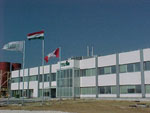
In September 1999, Wescast and Linamar Corporation entered into an agreement to build an integrated casting and machining facility in Oroszlány, Hungary. Production began in January 2002. This bold move was an opportunity for Wescast to capture some of the European market in manifolds, turbo chargers and integrated turbo manifolds.
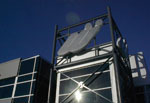
The Technical Development Centre (TDC) and Corporate Office in Brantford, Ontario consolidated all of the Company’s research and development, product design/testing activities and diversification initiatives in one state-of the-art facility. The building houses the corporate staff and includes a mini-foundry and machine shop for making prototypes for advanced engineering.
2007

Wescast initiated a detailed study of the Asian market, which revealed many opportunities for Wescast. As a result, Wescast decided to invest in the China market with a casting and machining production facility.
Wescast investigated methods to cast stainless steel and invested in a pilot plant using an existing facility to test a new licensed technology called SLIC. The new casting methodology provided distance benefits and the pilot plant provided the opportunity to learn more about this new technology before moving to full-scale production.
2009
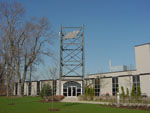
After successful trials in the WSS pilot plant, Wescast moved the plant to a full-scale production facility. In so doing, Wescast was able to secure several GM stainless steel manifold programs, as well as Wescast’s first stainless steel turbo program for Honeywell Turbo Technologies as part of this expansion.
2010
A global focus on vehicle weight reduction, fuel economy and emissions initiated changes in vehicle and powertrain design. As a result, the Innovation Council was formed, consisting of strategic decision makers who meet regularly to discuss the status and progression of innovation projects. The Innovation Council ensures Wescast is creating innovative solutions for customers that align with future trends.
2011
As the global market for stainless steel grew, Wescast investigated methods to use its existing green sand foundry in Wuhan for stainless steel production. After successful trials, Wescast expanded its material offering to include stainless steel and opened Wescast Asia to the fast growing market of stainless steel turbo chargers and certain manifold applications.
2013
The Board of Directors decided to evaluate Strategic Alternatives for increasing the shareholder value of Wescast. Several alternatives were reviewed in the market with the help of third party advisors and it was determined that selling the company was the best option. During the selling process, several bids were evaluated, which lead to the completion of the plan of arrangement with Bohong.
